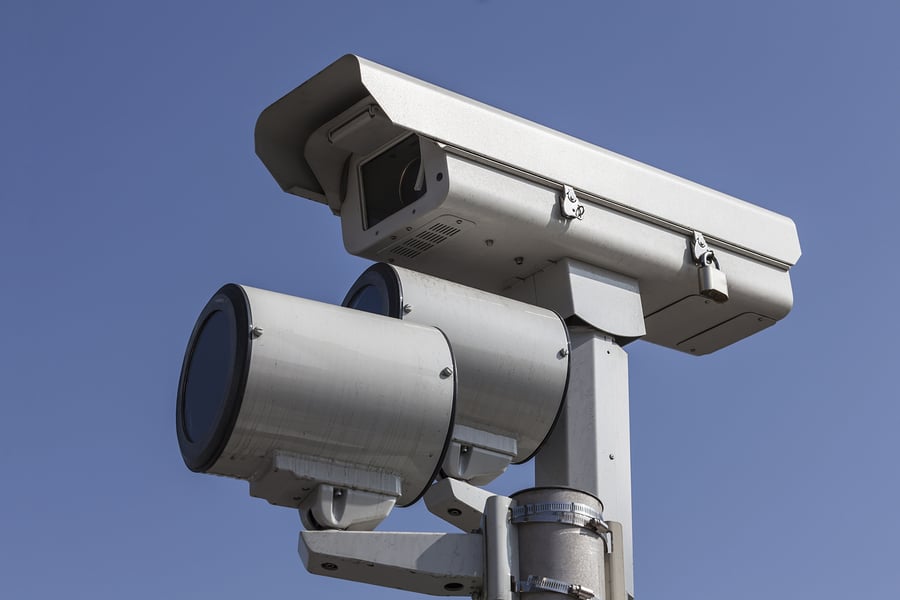It is perhaps something of a television trope: an individual suffers a catastrophic and debilitating personal injury following an accident or incident. The defendant or the defendant’s lawyer does not believe the that the injury exists or that its extent has been exaggerated by the plaintiff. The defendant or his or her counsel then hires and dispatches a private investigator to surveil the individual in their activities of daily life. Many times this surveillance can include the creation of a video that supposedly provides a “window” into the daily life of the plaintiff. However, what these videos purport to show does not always line-up with reality. Furthermore, many people wonder and have asked, “Can they do that?”
In short, if you are in a public place, your activities can be recorded by an investigator. In fact, in many public locations private security cameras are already recording the actions of all who enter. While it is practically impossible to avoid being recorded without taking extreme measures or becoming a recluse, your approach to the matter can largely blunt much of the potential effect
What Do the Videos Show?
While each and every video is unique, they typically attempt to show the plaintiff in a light that makes it appear that his or her injuries are less serious and thus less limiting than they allege. Advanced warning that you are being monitored and recorded is, understandably, almost never provided. The investigator then spends a period of days or weeks where they Surveillance Videos are used to Impeach Personal Injury Plaintiffs in Pennsylvania film the individual. That is, the investigator will turn the camera on and off as it suits his or her client’s goals. Furthermore, considering the length of time the video is filmed over in contrast to the time available in court, it will almost assuredly go through some post-production to edit, clean-up and better frame their message. Thus what can end up happening is that a video showing only the “worst” is produced.
Can the Videos Be Used in Court?
While the exact determination would be based on your claims and the video’s content, in most circumstances Pennsylvania’s Rules of Evidence would permit them to be introduced to a court. As per Rule 402, all relevant evidence is admissible. Rule 401 sets forth that relevant evidence is evidence that tends to “make a fact more or less probable than it would be without the evidence” and that the action.” Furthermore, evidence of this type would not typically be barred by the hearsay rule because it is recorded by a machine and it is therefore non-hearsay.
In some situations, if the video does not reflect the circumstances or if it is a misstatement or mischaracterization your lawyer can argue on an array of grounds that the tape should not be admitted into evidence. Rule 403 holds that a Pennsylvania court, “may exclude relevant evidence if its probative value is outweighed by a danger. Dangers identified by the court include:
- Unfair prejudice
- Confusing the issues
- Misleading the jury
- Undue delay
- Wasting time
- Needless presentation of cumulative evidence

Of course, when dealing with evidence and digital evidence there are other concerns including foundational issues and authentication issues. However, for the purposes of this blog post, this is a fair overview of the initial evidentiary concerns.
How Will Courts in Pennsylvania Handle Evidence of this Type?
The issue of the admissibility and procedures for handling video evidence allegedly showing a personal injury plaintiff engaging in rigorous physical activities was at issue and addressed by the Pennsylvania courts in Bindschusz v. Phillips. The court recognized that video recordings are made for the purposes of impeaching a witness’ or plaintiff’s credibility and has the potential to have a “dramatic impact in court”. Bindschusz v. Phillips, 771 A.2d 803, (Pa. Super 2001). Further, the possibility that such evidence exists can, “cause the most blatant liar to consider carefully the testimony he plans to give under oath.” Id. But, the court recognizes that a video can also be used to deceive, “Distances may be minimized or exaggerated. Lighting, focal lengths, and camera angles all make a difference. Action may be slowed down or speeded up. The editing and splicing of films may change the chronology of events. An emergency situation may be made to appear commonplace. That which has occurred once can be described as an example of an event which recurs frequently.” Id.
The court also notes the tension between the best interests of the plaintiff and the defendant. That is, a plaintiff’s attorney would like to review the video and prepare his or her client or witness prior to a deposition or cross-examination. In contrast, a defendant’s attorney would prefer for the witness of the plaintiff to be deposed without seeing or having knowledge that a potentially impeaching video exists and then reveal the impeaching evidence at the last possible moment before or during the trial.
The court attempted to bridge these competing interests by requiring that defendant’s counsel must provide and exhibit the videos to plaintiff and his or her counsel. However, prior to making these disclosures, “the defense must be given an opportunity to depose the plaintiff fully as to his injuries, their effects and his present disabilities.” This approach serves a few purposes. First the knowledge that a tape exists while being unaware of its exact contents should increase the likelihood that testimony is accurate. Further, the defendant will have the opportunity to impeach the witness of the defendant at trial and the plaintiff can prepare in how to address the film at trial if he or she believes the content is inaccurate or misleading.
What Do I Do to Lessen the Potential Impacts of Evidence Like This?
Each and every situation is unique and you should seek and heed the advice of an experienced personal injury and trial attorney before taking action. However, advice that is generally applicable and should always be adhered to is that you should be honest about the extent of your injuries. Now, understand that this does not mean that you should minimize your injuries. In fact, it means that you should describe the full extent of the limitations, pain, and suffering you experience, but you should not exaggerate or overstate the effects. Overstating your injuries may seem like a good idea to a layperson because greater injuries typically mean that greater damages are available, but overstatements can harm your credibility and can be used to minimize the impacts you are experiencing. When you exaggerate or make statements that can be mischaracterized your credibility can be harmed and the jury may choose to disbelieve your testimony.
Furthermore, this may also seem to be rather straightforward, but you should also be sure to adhere to the limitations that have been set forth by your doctor or treating physician. All too often pride or practical reasons can cause injured individuals to do more than they should. A video or photograph may not necessarily capture your difficulty with the task or the after-effects you may experience. Following your doctor’s instructions not only provides the best chance for as full of a recovery is possible, but also it can prevent a mischaracterization of your condition.
In short, there is little you can do to stop defendant’s counsel from engaging in most forms of surveillance. However, understanding how evidence like this can be used along with how it is handled by the court can prevent unnecessary damage to your case and reputation. And if you have been seriously injured due to negligence or intentional acts of another person be sure to contact an experienced personal injury attorney. For a free and confidential legal consultation, call The Reiff Law Firm at (215) 709-6940 or contact us online.
Related Posts
- What You Should Know About Cement Truck Accidents
- Do Insurance Companies Get Footage from Traffic Cameras in Philadelphia?
- What Should You Do After You Get into a Truck Accident in Pennsylvania?
- I Got Into an Accident with a Truck on I-95 in Pennsylvania
- Despite GM Recall & Ignition Switch Repairs Cars Are Still Stalling















